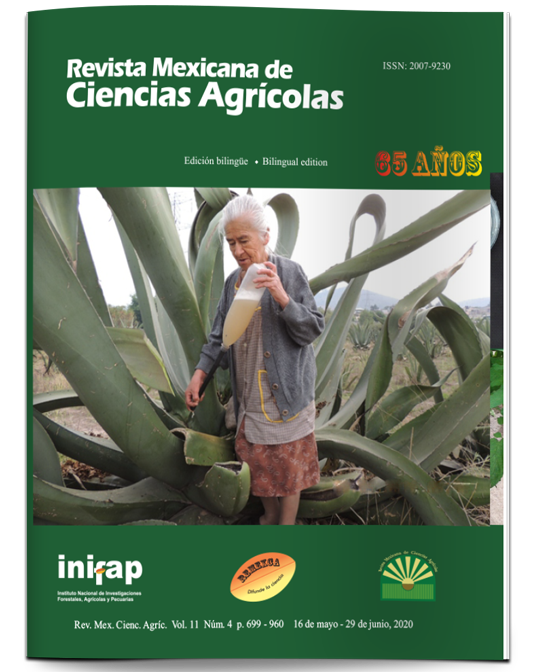Mapping of avocado in the south of the state of Mexico by digital image processing sentinel-2
DOI:
https://doi.org/10.29312/remexca.v11i4.2173Keywords:
Persea americana Mill., SAM, vegetation indicesAbstract
The avocado crop (Persea americana Mill.) is one of the most important in Mexico, among the states with the highest production is the State of Mexico, which is the third producing state nationwide. Coatepec Harinas and Donato Guerra are two of the most representative municipalities regarding this activity; however, there is no census that specifies the surface of the crop, so the objective of this research was to test vegetation index methods, spectral angle mapper (SAM) and spectral information divergence (SID) algorithms and the combination of these in Sentinel-2 sensor images to evaluate its performance in identifying areas planted with the avocado crop. The results were validated with a confusion matrix and the comparison of the training and validation reference data. The SID algorithm achieved an accuracy of 97.5% to detect avocado, while the SAM treatment obtained an accuracy of 63.1%. The combination of SID with the Anthocyanin Reflectance Index 1 (ARI1), provided a better result on regional validation mapping with 85% accuracy. Other combinations of indices and treatments gave results less than 50% of the precision, so they are not recommended. This methodology could be tested for the detection of other crops of commercial interest, since Sentinel-2 shows to be a viable alternative for this type of study, having a good spectral resolution, as well as being easily accessible and manipulated.
Downloads
Published
How to Cite
Issue
Section
License
Copyright (c) 2020 Revista Mexicana de Ciencias Agrícolas

This work is licensed under a Creative Commons Attribution-NonCommercial 4.0 International License.
The authors who publish in Revista Mexicana de Ciencias Agrícolas accept the following conditions:
In accordance with copyright laws, Revista Mexicana de Ciencias Agrícolas recognizes and respects the authors’ moral right and ownership of property rights which will be transferred to the journal for dissemination in open access. Invariably, all the authors have to sign a letter of transfer of property rights and of originality of the article to Instituto Nacional de Investigaciones Forestales, Agrícolas y Pecuarias (INIFAP) [National Institute of Forestry, Agricultural and Livestock Research]. The author(s) must pay a fee for the reception of articles before proceeding to editorial review.
All the texts published by Revista Mexicana de Ciencias Agrícolas —with no exception— are distributed under a Creative Commons License Attribution-NonCommercial 4.0 International (CC BY-NC 4.0), which allows third parties to use the publication as long as the work’s authorship and its first publication in this journal are mentioned.
The author(s) can enter into independent and additional contractual agreements for the nonexclusive distribution of the version of the article published in Revista Mexicana de Ciencias Agrícolas (for example include it into an institutional repository or publish it in a book) as long as it is clearly and explicitly indicated that the work was published for the first time in Revista Mexicana de Ciencias Agrícolas.
For all the above, the authors shall send the Letter-transfer of Property Rights for the first publication duly filled in and signed by the author(s). This form must be sent as a PDF file to: revista_atm@yahoo.com.mx; cienciasagricola@inifap.gob.mx; remexca2017@gmail.
This work is licensed under a Creative Commons Attribution-Noncommercial 4.0 International license.



